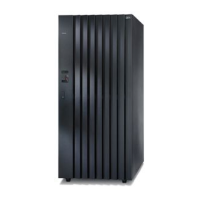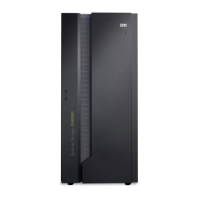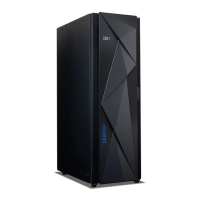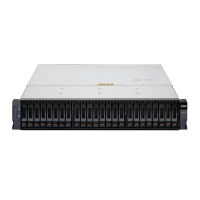paths that are associated with the
allegiance; access is for one or more
channel programs until the allegiance
ends.
RETAIN
See remote technical assistance information
network.
S
S/390 IBM enterprise servers based on
Enterprise Systems Architecture/390
(ESA/390). S/390 is the currently accepted
shortened form of the original name
System/390
®
.
S/390 storage
Storage arrays and logical volumes that
are defined as connected to S/390 servers.
This term is synonymous with
count-key-data storage.
SAID See system adapter identification number.
SAM See sequential access method.
SAN See storage area network.
SBCON
See Single-Byte Command Code Sets
Connection.
screen The physical surface of a display device
upon which information is shown to
users.
SCSI See small computer system interface.
SCSI device
A disk drive connected to a host through
an I/O interface using the SCSI protocol.
A SCSI device is either an initiator or a
target. See also initiator and small computer
system interface.
SCSI-FCP
Synonym for Fibre Channel Protocol, a
protocol used to transport data between
an open-systems host and a fibre-channel
adapter on an DS8000. See also Fibre
Channel Protocol and small computer system
interface.
SCSI host systems
Host systems that are attached to the
DS8000 with a SCSI interface. Such host
systems run on UNIX, i5/OS, Windows
NT
®
, Windows 2000, or Novell NetWare
operating systems.
SCSI ID
A unique identifier assigned to a SCSI
device that is used in protocols on the
SCSI interface to identify or select the
device. The number of data bits on the
SCSI bus determines the number of
available SCSI IDs. A wide interface has
16 bits, with 16 possible IDs.
SDD See IBM Subsystem Multipathing Device
Driver.
secondary control unit
The DS8000 to which a Remote Mirror
and Copy secondary device is physically
attached.
self-timed interface (STI)
An interface that has one or more
conductors that transmit information
serially between two interconnected units
without requiring any clock signals to
recover the data. The interface performs
clock recovery independently on each
serial data stream and uses information in
the data stream to determine character
boundaries and inter-conductor
synchronization.
sequential access
A mode of accessing data on a medium in
a manner that requires the storage device
to access consecutive storage locations on
the medium.
sequential access method (SAM)
An access method for storing, deleting, or
retrieving data in a continuous sequence
based on the logical order of the records
in the file.
serial connection
A method of device interconnection for
determining interrupt priority by
connecting the interrupt sources serially.
server A host that provides certain services to
other hosts that are referred to as clients.
A functional unit that provides services to
one or more clients over a network. (GC)
service boundary
A category that identifies a group of
components that are unavailable for use
when one of the components of the group
is being serviced. Service boundaries are
provided on the DS8000, for example, in
each host bay and in each cluster.
Glossary 207
